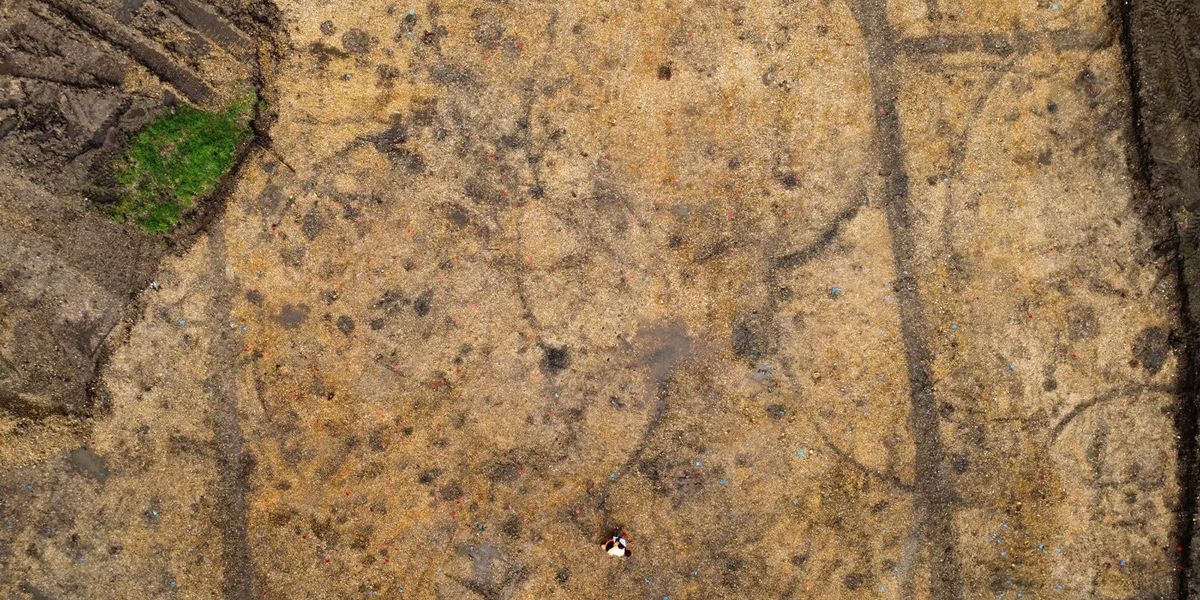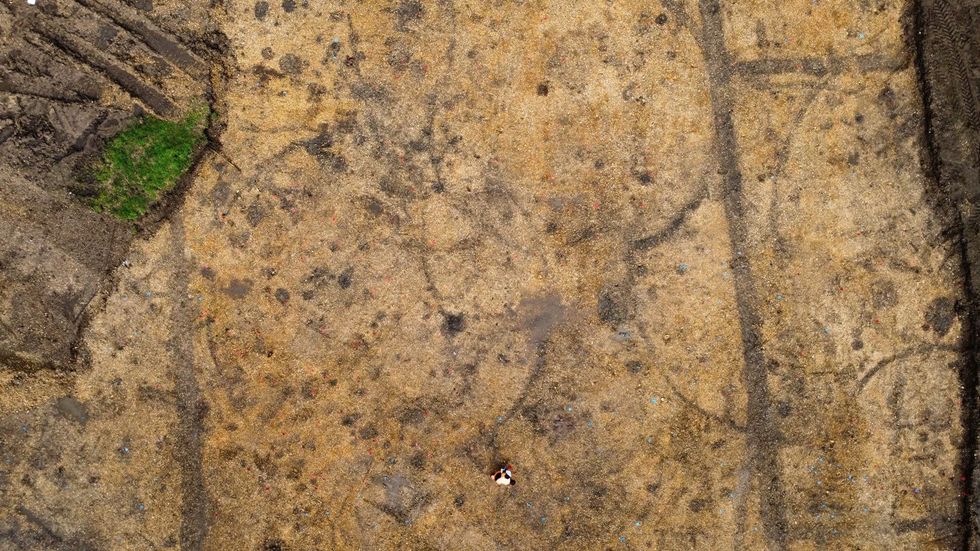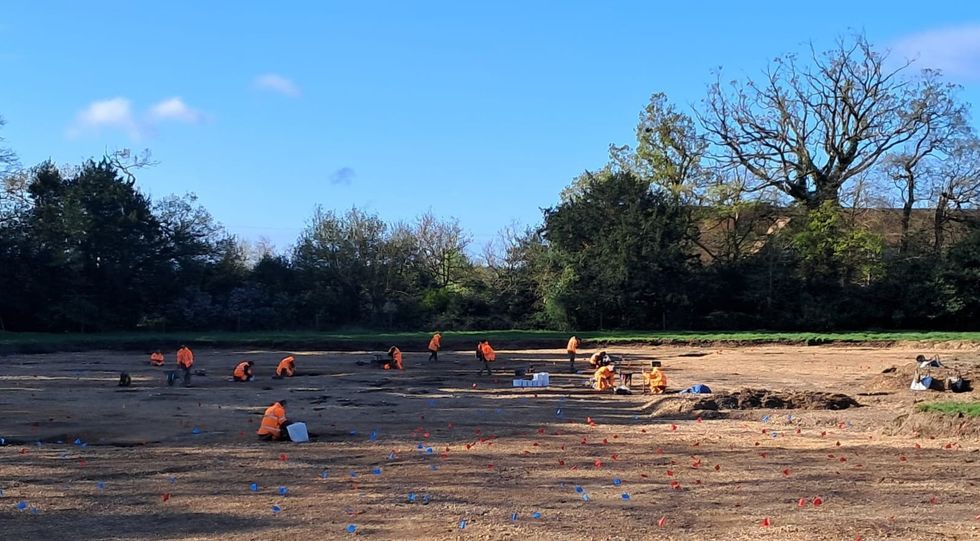



Archaeologists in Britain have revealed the ancient origins of a series of circles found beneath a British field.
An impressive cluster of rings has been uncovered during an excavation in Hampshire, providing evidence of a previously unknown settlement of "roundhouses".
Researchers estimate the 15 circles, which each measure around 13 metres in diameter, date from the late Iron Age to the early Roman period.
An open area of nearly 0.84 hectares on the western edge of Fordingbridge was uncovered, with over 2,000 features inside.
These included enclosures, ovens, and trackways, as well as the aforementioned roundhouses, the majority of which had east or southeast facing entrances and evidence of porches.
Archaeologists have suggested the intercutting examples provides evidence of the settlement's longevity, as buildings were being constructed after others fell into disuse.
The excavation, which was undertaken by Cotswold Archaeology's Andover team before a residential development by Cala Homes, has also provided evidence of ancient food and textiles.
Fired clay spindle whorls and loom weights back the idea that fabrics may have been made at the site, while "domestic processing" of cereals can be seen in fragments of a quern, a simple hand mill for grinding corn.
Archaeologists are particularly excited by the rare discovery of a complete quern stone, which was likely sourced from Sussex.

COTSWOLD ARCHAEOLOGY
|Archaeologists have suggested the intercutting roundhouses provide evidence of the settlement's longevity - as buildings were being built after others fell into disuse
Ruth Shaffery, a stone specialist, believes the quern to have had a long and well-used life which began as a bottom stone before being adapted and reused as a top stone.
A wooden handle would have been fitted into a slot carved on the thicker side, and both surfaces of the stone show wear from grinding.
The excitement over the discovery came as complete querns are incredibly rare to find, with just one per cent being found in this condition.
Other discoveries suggest a later shift in the site's use, moving from domestic life to "industrial-scale" production.

COTSWOLD ARCHAEOLOGY
|An open area of nearly 0.84 hectares on the western edge of Fordingbridge was uncovered, with over 2,000 features being revealed
An uncovered crucible indicates metalworking happened nearby, while large amounts of fired clay, misfired pottery and burnt flint could suggest ceramics were also being made.
The ceramic manufacturing also shows evidence of by-product usage as one of the pits is lined with misfired pottery which has been repurposed.
Also found in the excavation was a pit of 5,000 year old pottery.
The pottery has been identified as Middle Neolithic Peterborough Ware, named after a 20th century discovery of sherds, or fragments, of a similar style in Peterborough.
Amateur archaeologist George Wyman Abbott made the original discovery of this style in Fengate, a modern suburb of Peterborough.
Francis Pryor, a professional, later revisited the site in 1971, and this time the discoveries put Fengate on the map.
The style, which has a distinct, collared rim and elaborate decoration is among the earliest flat-based pottery to be found in Britain, and first emerged around 3,300 BC.
This form of Fengate Ware is similar to round-bowls which are commonly found on Early Neolithic sites.
